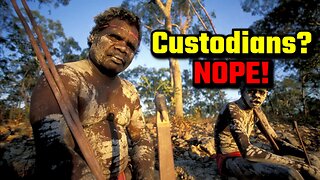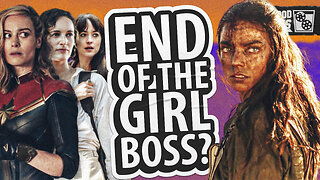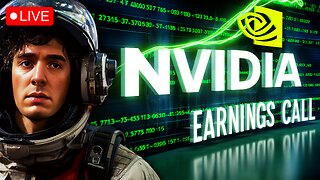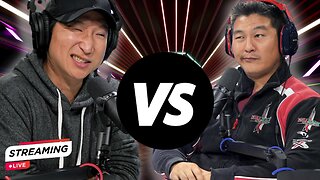A Real-Life Example of Indigenous Maths
In yesterday’s video, I perhaps took the mickey out of Indigenous maths, or more specifically, woke university professors trying to force it upon their students, while also trying to make students feel guilty about Australia’s colonial past by stating that modern-day mathematics is primarily European and British-based, which was forced upon Indigenous peoples. But as some of you pointed out, mathematics has its roots in Mesopotamia (present-day Iraq) – the Babylonians and so on – followed closely by Ancient Egypt, so essentially, we’ve all learnt mathematics from other lands and peoples across time. Anyway, in this video, in the interest of fairness, I’d like to present a real-life example of Indigenous maths.
In modern-day schooling, students typically learn multiplication through the use of times tables, right? No surprises there. So for example, 2 × 4 = 8, you can just think of it as two groups of four and then add them together using your fingers if your wanted to. But Dr Chris Matthews of the Aboriginal Torres Strait Islander Maths Alliance, and also an Associate Dean at University Technology of Sydney, describes how Aboriginal children turned the equation 2 × 4 = 8 into a dance about flying brolgas. A group of two children, acting as brolgas, flew together, and then linked up with another group of two, and then two more groups of two to become a collection of eight in total.
Okay, so I’m not trying to take away from the learning potential of this activity. Perhaps it sounds like a lot of fun, at least for some children, but is it practical? There are dozens of number facts here, not to mention addition, subtraction and division. Are we going to make up an Indigenous dance for each one? I think as a one-off sort of thing, it’s probably okay and a bit of fun, but in the long run, I think students just need to be encouraged to put their heads down and do some good old-fashioned study and revision.
As I mentioned previously, Indigenous children are falling behind when it comes to numeracy, and I don’t think it’s from a lack of Indigenous-specific mathematics. It’s certainly not from a lack of capability, or a lack of opportunity – there’s plenty of that in Australia. It’s from a lack of attendance. It’s easy to say that Indigenous children don’t attend school because they don’t find school fun, but surely non-Indigenous children also don’t find school very fun. I think lack of attendance is not from a lack of interest in school, it’s from a lack of parental guidance. My children don’t particularly like school, but I take them every day. I walk with them and we chat in the mornings, and they feel calm going to school in the morning. Sometimes I even do some revision with them.
Now I’m not necessarily saying that school is the best way to educate a child, but that’s what we’re kind of stuck with in the present day. I’m not taking away from homeschooling, or whatever, but somehow I don’t think homeschooling is the answer for most Indigenous families. If we want to help Indigenous children get better at maths, I think we need to find a way to get them to go to school. If we’re not prepared to that, then expect worse and worse educational outcomes.
MUSIC
Allégro by Emmit Fenn
-
 8:12
8:12
Daily Insight
13 days agoAustralia Would’ve Been Fine Without Aboriginal People
971 -
 15:32
15:32
Dave Portnoy
6 hours agoDavey Day Trader Presented by Kraken - May 22, 2024
8.47K4 -
 LIVE
LIVE
Film Threat
4 hours agoTHE END OF THE GIRL BOSS! | Hollywood on the Rocks
778 watching -
 2:10:24
2:10:24
Darkhorse Podcast
5 hours agoScience Friction: The 226th Evolutionary Lens with Bret Weinstein and Heather Heying
25.8K37 -
 43:18
43:18
Matt Kohrs
6 hours agoNvidia Earnings Preview & Full Options Analysis
19.4K4 -
 2:15:37
2:15:37
Matt Kim
18 hours agoLiberal TikTokers want to FIGHT me. 🤣
24.6K7 -
 1:19:41
1:19:41
Dr. Drew
5 hours agoUnelected NIH Official Admits US Taxpayers Funded Gain Of Function Research At EcoHealth Alliance & Wuhan Institute Of Virology w/ Jeffrey Tucker & Auron MacIntyre – Ask Dr Drew
24.8K19 -
 13:44
13:44
Breaking Points
6 hours agoUK Court HUMILIATES Biden In New Assange Ruling
24.1K60 -
 2:54:52
2:54:52
The Charlie Kirk Show
6 hours agoThe FBI's Plot To Shoot Trump + Lincoln's Special Forces | Kelly, Kaplan, Scharf O'Donnell | LIVE
106K177 -
 1:42:44
1:42:44
Barstool Yak
7 hours agoThe Yak with Big Cat & Co. Presented by Rhoback | The Yak 5-22-24
29.5K1